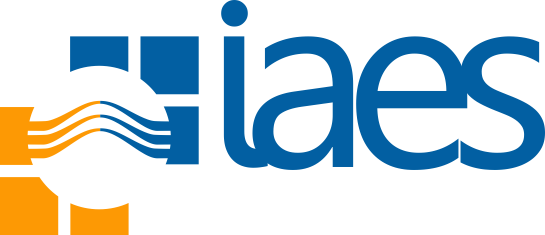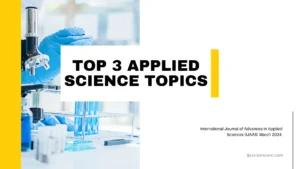The Directory of Open Access Journals (DOAJ) is an online directory that indexes and provides access to high-quality, peer-reviewed Open Access (OA) journals across various disciplines. It serves as a comprehensive and authoritative source for researchers, scholars, students, and the public to discover and access scholarly articles and research outputs that are freely available online.
Established in 2003, the DOAJ aims to promote the widespread adoption and visibility of Open Access publishing practices by providing a platform for OA journals to showcase their content. Journals included in the DOAJ undergo a rigorous evaluation process to ensure they meet certain quality and transparency standards. These standards encompass criteria related to open access policies, peer review processes, licensing, editorial quality, and more.
By indexing journals in the DOAJ, publishers can enhance the visibility and credibility of their OA publications, while researchers benefit from easy access to a vast array of freely available scholarly literature. Additionally, the DOAJ facilitates the discovery of reputable OA journals for institutions, libraries, funding agencies, and other stakeholders interested in supporting open access initiatives and promoting scholarly communication.
How to get OA journals indexed in the DOAJ: Updated guide in 2024
Getting Open Access (OA) journals indexed in the Directory of Open Access Journals (DOAJ) involves meeting specific criteria and following a detailed application process. As of 2024, here is an updated guide to help you through this process:
1. Understand the DOAJ Criteria
Before applying, ensure your journal meets the DOAJ criteria, which focus on quality, transparency, and best practices in scholarly publishing. Key criteria include:
- Open Access: The journal must provide immediate and free access to all content.
- Peer Review: The journal must have a clear peer review process.
- Editorial Board: The journal should have an editorial board with recognized experts.
- ISSN: A valid International Standard Serial Number (ISSN) is required.
- Website: The journal’s website should clearly state its aims, scope, editorial board, and contact information.
- Publication Frequency: The journal should publish at least 5 articles per year.
- Archiving Policy: The journal must have a plan for digital preservation.
- Licensing Information: Clear licensing information must be provided (e.g., Creative Commons licenses).
2. Prepare Your Journal for Application
Ensure your journal’s website and practices align with the DOAJ requirements:
- Aims and Scope: Clearly defined on the journal’s website.
- Editorial Board Details: Names, affiliations, and contact information of editorial board members.
- Peer Review Process: Detailed description of the peer review process.
- Author Guidelines: Clear instructions for authors regarding manuscript submission and ethical guidelines.
- Licensing Information: Display the type of license under which articles are published.
- Digital Preservation: Mention your archiving system, e.g., LOCKSS, CLOCKSS, or institutional repositories.
3. Create an Account on DOAJ
Go to the DOAJ website https://doaj.org/ and create a user account. You will need to provide some basic information about yourself and your role in the journal.
4. Submit the Application
After logging into your DOAJ account, follow these steps:
- Start a New Application: Click on “Submit your journal” to begin the application process.
- Complete the Application Form: Provide detailed information about your journal, including:
- Journal title, ISSN (print and/or electronic), and URL.
- Publisher details and country of publication.
- Subject areas covered by the journal.
- Language(s) of publication.
- Information on the peer review process and editorial board.
- Open access statement and licensing information.
- Digital archiving policy.
- Publication frequency and volume/issue information.
5. Review and Submit
Carefully review your application to ensure all information is accurate and complete. Once satisfied, submit the application.
6. Respond to DOAJ Queries
After submission, DOAJ may contact you for additional information or clarifications. Respond promptly and provide the necessary details to facilitate the review process.
7. Application Review and Decision
The DOAJ editorial team will review your application. This process can take several months. If your journal meets all criteria, it will be indexed in the DOAJ. You will be notified of the decision via email.
8. Maintain Standards
Once indexed, ensure your journal continues to adhere to DOAJ standards. Regularly update your journal’s website and practices in line with best practices in scholarly publishing.
Additional Tips
- Transparency: Be transparent about the journal’s editorial policies, peer review process, and fees (if any).
- Quality: Maintain high standards in the peer review process to ensure the publication of high-quality research.
- Updates: Regularly update your journal’s information on the DOAJ platform, especially when there are significant changes.
For more detailed guidelines and updates, refer to the DOAJ Application Form and DOAJ’s Guide on their website.
Why apply to add journals to the DOAJ?
Applying to have journals indexed in the Directory of Open Access Journals (DOAJ) offers several significant benefits for publishers, authors, and the scholarly community. Here are the main reasons to consider this step:
1. Increased Visibility and Discoverability
Being indexed in the DOAJ enhances the visibility of a journal. Researchers and readers worldwide use DOAJ as a reliable source for finding high-quality, peer-reviewed open access journals. This increased visibility can lead to higher readership and citation rates for articles published in the journal.
2. Credibility and Trust
Inclusion in the DOAJ serves as a mark of quality and credibility. The DOAJ has stringent criteria for indexing, and being listed signals to authors, readers, and institutions that the journal adheres to high standards of editorial and publishing practices. This can enhance the reputation of the journal within the academic community.
3. Compliance with Open Access Policies
Many funding agencies and institutions require that research be published in open access journals indexed in reputable databases like DOAJ. Being listed helps journals attract submissions from authors who need to comply with these mandates, thereby increasing the journal’s pool of high-quality submissions.
4. Promotion of Open Access
Indexing in the DOAJ supports the broader movement towards open access in scholarly publishing. It ensures that research is freely available to all, promoting knowledge dissemination and equitable access to scientific information.
5. Access to DOAJ Services and Support
Journals indexed in the DOAJ can benefit from various services and support provided by the directory. This includes being part of a respected community of open access publishers, access to resources on best practices in open access publishing, and potential inclusion in various DOAJ promotional activities.
6. Improved Journal Metrics
Listing in the DOAJ can improve the journal’s metrics by increasing its exposure. Many academic and research institutions consider DOAJ indexing when evaluating journals for their internal databases, institutional repositories, and library collections.
7. SEO Benefits
DOAJ indexing can improve the journal’s search engine optimization (SEO). Articles from DOAJ-indexed journals are more likely to appear higher in search engine results, making them more accessible to potential readers.
8. Networking and Collaboration Opportunities
Being part of the DOAJ community can lead to networking opportunities with other publishers, researchers, and institutions committed to open access. This can open doors to collaborations, partnerships, and funding opportunities.
9. Contribution to Scholarly Integrity
By adhering to DOAJ’s rigorous standards, journals contribute to maintaining and promoting integrity and ethical practices in scholarly publishing. This commitment helps combat issues like predatory publishing and ensures a higher level of trust in academic publications.
Conclusion
Applying to add journals to the DOAJ is a strategic move that benefits both the journal and the wider academic community. It enhances the journal’s visibility, credibility, and compliance with open access mandates, while also contributing to the global effort to make research freely accessible and ethically sound.
Types of journals that can apply to the DOAJ
The Directory of Open Access Journals (DOAJ) welcomes applications from a wide range of journals that meet its criteria for open access and scholarly publishing standards. Here are the types of journals that can apply:
1. Scholarly and Peer-Reviewed Journals
- Academic Journals: Journals that publish original research articles, review articles, and scholarly papers across various academic disciplines.
- Professional Journals: Journals that cater to professionals in specific fields, such as medicine, engineering, law, and education, and include peer-reviewed content relevant to those professions.
- Disciplinary Journals: Journals that focus on specific academic disciplines, such as humanities, social sciences, natural sciences, engineering, and medicine.
2. Multidisciplinary Journals
- Journals that publish research across multiple academic disciplines. These journals must still adhere to the DOAJ criteria for peer review and editorial standards.
3. Regional and National Journals
- Journals that focus on research relevant to specific regions or countries, provided they meet the quality and open access criteria set by DOAJ.
4. Language-Specific Journals
- Journals that publish in languages other than English. DOAJ accepts journals in all languages, promoting the diversity of scholarly communication.
5. Specialty and Niche Journals
- Journals that cater to specific niche areas or specialized fields of study, including emerging or interdisciplinary fields.
6. Student Journals
- Peer-reviewed journals managed and edited by students, typically at the graduate or doctoral level, provided they adhere to the required editorial and peer review standards.
7. Society and Association Journals
- Journals published by academic societies, professional associations, or other organizations dedicated to advancing research and knowledge in specific fields.
8. Government and Institutional Journals
- Journals published by government agencies, research institutions, universities, or other public entities, focusing on disseminating research findings and scholarly work.
9. Open Access Monograph Series
- Series that publish monographs or edited volumes under open access, provided they have a clear peer review process and adhere to scholarly standards.
10. Conference Proceedings
- Journals or series that publish peer-reviewed conference proceedings, ensuring the content meets the standards of quality and peer review required by DOAJ.
Key Requirements for All Journals
Regardless of the type, all journals applying to the DOAJ must meet the following key requirements:
- Open Access: All content must be freely accessible without any embargo period.
- Peer Review: The journal must employ a rigorous peer review process.
- Editorial Board: The journal must have a reputable editorial board with recognized experts.
- ISSN: A valid ISSN (International Standard Serial Number) is required.
- Transparency: Clear information about editorial policies, peer review process, and licensing must be provided on the journal’s website.
- Licensing: Clear licensing terms (e.g., Creative Commons licenses) must be stated.
- Archiving: There must be a policy for digital preservation and archiving of content.
By adhering to these standards, a wide variety of journals can successfully apply to be indexed in the DOAJ, enhancing their visibility and credibility in the academic community.
Before diving into the specifics of the DOAJ indexing process, let’s review the high-level admittance requirements that publishers and editors need to determine a journal’s eligibility. If you’re already familiar with these criteria, feel free to skip ahead.
At a high level, journals must be fully Open Access (OA) and adhere to the “Principles of Transparency and Best Practice in Scholarly Publishing,” co-created by the DOAJ, COPE, OASPA, and WAME, to be eligible for DOAJ indexing. The DOAJ application incorporates many of these Principles, so if your journal meets the following criteria, you’re on the right track. However, it’s still important to review the Principles in detail to ensure full compliance.
The DOAJ defines fully OA journals as:
“Journals where the copyright holder of a scholarly work grants usage rights to others using an open license (Creative Commons or equivalent). This allows for immediate free access to the work and permits any user to read, download, copy, distribute, print, search, or link to the full texts of articles, crawl them for indexing, pass them as data to software, or use them for any other lawful purpose.”
While the DOAJ allows journals to charge for print issues, they cannot charge for or require readers to register to view any online content, and embargoes are not permitted.
Additionally, journals must have a history of at least one year of fully OA publishing or have published at least 10 OA research articles. They must also consistently publish at least five scholarly articles per year targeted at researchers or practitioners. Detailed criteria for what constitutes scholarly articles, including clinical case reports and conference proceedings, can be found on the DOAJ website.
The DOAJ welcomes applications from eligible OA journals in all subject areas (STEM, humanities, and social sciences) and all languages. Therefore, all OA journals that meet the DOAJ indexing criteria are encouraged to apply.
In the next section, we will review the DOAJ’s indexing criteria in the order they appear on the application form and how to fulfill them.
1. Confirmation of OA Publishing and OA Policy Statement
The first step in the DOAJ application process is for journals to verify that they adhere to the DOAJ’s definition of fully Open Access (OA) publishing. Journals must also provide a URL to a webpage that contains a formal OA statement, typically found on the journal’s author information page or a dedicated journal policies page.
The DOAJ provides an example OA statement in its application form:
“This is an open access journal which means that all content is freely available without charge to the user or his/her institution. Users are allowed to read, download, copy, distribute, print, search, or link to the full texts of the articles, or use them for any other lawful purpose, without asking prior permission from the publisher or the author. This is in accordance with the BOAI definition of open access.”
2. Required Basic Journal Information
The next section of the DOAJ application includes essential questions that every journal must answer to be considered. The required information includes:
- Journal Title: This must match the title registered with all official publication identifiers (e.g., ISSN).
- Journal Website URL: The journal must have a dedicated website or a subdomain page hosted on a publisher’s site.
- Journal ISSN (Print Version): Provide this only if the journal has a print ISSN; otherwise, leave it blank.
- Journal ISSN (Online Version): A valid ISSN must be listed on the journal’s website, whether it’s for print or online.
- Keywords: Up to 6 keywords describing the journal’s subject matter, in English.
- Languages of Manuscripts: Indicate all languages in which the journal accepts manuscripts.
- Publisher Name: The organization that officially publishes the journal.
- Publisher’s Country: The country where the publisher is based.
- Affiliated/Sponsoring Society or Institution: If applicable, mention any society or institution associated with the journal that is not the official publisher.
Additionally, journals must adhere to the following DOAJ requirements:
- Each article must be available as an individual, full-text HTML or PDF file with a unique URL.
- The journal must not have “intrusive advertising,” as per the Principles of Transparency and Best Practice in Scholarly Publishing.
- Charges for article withdrawal after submission must not exceed other author fees.
- Journals cannot display “Impact Factors or ranking metrics” from services other than Clarivate and Scopus on their website.
3. Copyright and Licensing
Journals must have appropriate copyright licensing to be eligible for DOAJ indexing. The application requires:
- License(s) the Journal Permits: DOAJ recommends Creative Commons licenses but allows proprietary licenses if they have similar terms and conditions.
- URL for License Terms: A copyright policy/statement for published content must be clearly visible on the journal’s website.
- Licensing Information Display: Indicate if licensing information is embedded or displayed in all versions of each article.
- Author Copyright Retention: Confirm if authors retain all rights under any license the journal permits.
- Link to Copyright Terms: Provide a link to the journal’s copyright policy/statement.
4. Editorial Policies and Processes
The DOAJ requires journals to display strong editorial policies and ensure all articles undergo quality control (peer review) before publication. The journal must have an active editorial board with at least five members who have appropriate qualifications and expertise. The DOAJ recommends that editors not be from the same institution and that the proportion of published research papers involving editors or board members not exceed 25%.
STEM journals must have a peer-review process involving at least two qualified external referees for each article. Humanities journals can use peer review or an editorial review workflow with a minimum of two editors reviewing submissions. Editorial process information must be publicly available on the journal’s website.
Required editorial policy information includes:
- Type(s) of Review: Specify the types of review the journal uses (e.g., anonymous, double-anonymous, editorial review).
- Link to Editorial/Peer Review Policies: Provide a link to the journal’s policies.
- Plagiarism Screening: Indicate if the journal screens submissions for plagiarism.
- Link to Plagiarism Policy: If applicable, provide a link to the journal’s plagiarism policy.
- Aims & Scope: Link to the journal’s Aims & Scope page.
- Editorial Board: Link to a page listing the names and institutional affiliations of all editors.
- Instructions for Authors: Link to the instructions for authors page.
- Average Submission to Publication Time: State the average number of weeks between submission and publication.
- Reviewer List: If the journal displays a list of reviewers, include their names and affiliations.
5. Business Model Details
The DOAJ requires journals to have publicly available information about their funding model and any author fees. The application requires:
- Author Fees: Indicate whether the journal charges any fees (e.g., submission fees, editorial processing charges, article processing charges, page charges, color charges).
- Highest Possible Author Fee: If fees are charged, state the highest possible fee and accepted currencies.
- Link to Author/Publication Fee Information: Provide a link to a page with fee information. If no fees are charged, this must be explicitly stated on the journal’s website.
- Waiver Policy: Indicate if the journal has a waiver policy for authors from low and/or middle-income economies and provide a link to the waiver policy.
- Other Publication Fees: Confirm if there are any other fees and provide a link to a page where all fees are transparently stated.
By following these guidelines, journals can ensure they meet the DOAJ’s standards for indexing.
Overview the DOAJ’s indexing criteria
Certainly! Here’s an overview of the DOAJ’s indexing criteria in the order they appear on the application form, along with guidance on how to fulfill each requirement:
1. Basic Journal Information
- Journal Title: Ensure the journal’s title is clear and accurately reflects the scope of the journal.
- Journal URL: Provide a valid URL to the journal’s homepage.
- Publisher: Clearly state the name of the publishing entity.
- Society or Institution: Mention if the journal is associated with any academic society or institution.
2. Identifiers
- ISSN (Print and Online): Provide valid ISSNs for both print and online versions, if applicable. Obtain these from a recognized issuing agency if not already done.
3. Contact Information
- Principal Contact for DOAJ: Include the name, email, and affiliation of the person responsible for the application.
- Editorial Contact Information: Ensure there is a publicly accessible contact on the journal’s website.
4. License Information
- License Type: Specify the type of license under which the journal’s content is published, e.g., Creative Commons (CC BY, CC BY-SA, etc.).
- License Terms: Display the licensing terms clearly on the website, typically in the “About” or “Information for Authors” section.
5. Open Access Policy
- OA Statement: Clearly state the journal’s open access policy, confirming that all content is freely accessible without delay.
- Reader Rights: Ensure readers have rights to access, read, download, copy, distribute, print, search, or link to the full texts of articles.
6. Author Charges
- APCs: Declare any Article Processing Charges (APCs) or state that there are no charges. This information should be transparent and available on the journal’s website.
- Waivers: If applicable, provide details about waiver policies for authors.
7. Peer Review Process
- Peer Review Statement: Describe the peer review process in detail. Ensure this information is clearly visible on the journal’s website.
- Peer Review Model: Indicate whether the journal uses single-blind, double-blind, open, or another type of peer review.
8. Editorial Board
- Editorial Board Members: List the names and affiliations of all editorial board members. Ensure this information is up-to-date and available on the journal’s website.
- Editorial Responsibilities: Clearly define the roles and responsibilities of the editorial board.
9. Governing Body
- Ownership and Management: Provide clear information about the ownership and management of the journal, typically included in the “About” section.
10. Business Model and Access
- Revenue Sources: Indicate the journal’s revenue sources (subscriptions, advertising, APCs, etc.). Ensure transparency in how the journal is funded.
- Access Policy: Confirm that there are no access restrictions to the journal’s content.
11. Publication Frequency
- Frequency: State how often the journal publishes (monthly, quarterly, etc.). Ensure this is consistent with the actual publication record.
12. Start Year
- First Year of Publication: Provide the year when the journal first started publishing.
13. Journal URLs
- Aims & Scope URL: Provide a direct URL to the journal’s aims and scope.
- Author Guidelines URL: Provide a direct URL to the author guidelines.
- Editorial Board URL: Provide a direct URL to the editorial board information.
14. Archiving
- Archiving Policy: Describe the journal’s digital preservation methods. Mention specific services used, like LOCKSS, CLOCKSS, PubMed Central, or institutional repositories.
15. Direct Links to Articles
- Full-Text Formats: Specify the formats in which full-text articles are available (HTML, PDF, XML, etc.).
- DOIs: If available, provide information about the use of Digital Object Identifiers (DOIs) for articles.
16. Plagiarism Policy
- Plagiarism Detection: Describe the journal’s plagiarism detection process and tools used, if any.
17. Ethics and Malpractice
- Ethics Statement: Provide a clear statement on publication ethics and malpractice, including guidelines for authors, reviewers, and editors.
- Misconduct Handling: Outline procedures for handling allegations of research misconduct.
18. Statistics
- Usage and Impact Statistics: If available, provide data on journal usage, downloads, and citation metrics.
Fulfilling the Criteria
- Documentation: Ensure all required information is documented and easily accessible on the journal’s website.
- Transparency: Maintain high transparency in policies and procedures to build trust and credibility.
- Regular Updates: Regularly update the website with current information about the journal’s policies, editorial board, and content.
By meticulously fulfilling each of these criteria, journals can improve their chances of being successfully indexed in the DOAJ, thus enhancing their visibility and credibility in the academic community.
Encouraged but not required publishing best practices
When applying to the Directory of Open Access Journals (DOAJ), adhering to certain best practices can enhance a journal’s reputation and operational standards, even though they are encouraged but not strictly required. Implementing these practices can help demonstrate a commitment to quality and ethical publishing.
1. Adopt Established Ethical Standards
- COPE Membership: Consider joining the Committee on Publication Ethics (COPE) and adhering to its guidelines.
- Ethics Policies: Develop and clearly communicate policies on publication ethics, including guidelines for handling conflicts of interest, data integrity, and author misconduct.
2. Indexing and Abstracting Services
- Wider Indexing: Aim to get indexed in additional reputable databases like Scopus, Web of Science, PubMed, etc.
- Abstracting Services: Get listed in specialized abstracting services relevant to the journal’s field to increase discoverability.
3. Enhanced Peer Review Process
- Transparent Review: Provide detailed information on the peer review process, including reviewer selection criteria and review timelines.
- Open Peer Review: Consider adopting an open peer review model where reviewer comments and author responses are published alongside the article.
4. Use of Persistent Identifiers
- ORCID iDs: Encourage or require authors to register for and use ORCID iDs to uniquely identify researchers.
- DOIs for Articles: Ensure each article is assigned a Digital Object Identifier (DOI) to provide a permanent link to its online location.
5. Transparent Editorial Processes
- Editorial Policies: Clearly outline editorial policies, including criteria for article acceptance, and make them easily accessible.
- Decision Transparency: Provide transparency in editorial decision-making processes and timelines.
6. Article-Level Metrics
- Usage Statistics: Provide detailed article-level metrics such as views, downloads, and citations.
- Altmetrics: Use alternative metrics (altmetrics) to track the broader impact of articles through social media mentions, news coverage, and other online platforms.
7. Open Data Policies
- Data Availability Statements: Encourage authors to include data availability statements with their submissions.
- Data Repositories: Recommend or require the deposit of research data in reputable data repositories and link the data to the published articles.
8. Archiving and Preservation
- Multiple Preservation Services: Utilize multiple digital preservation services (e.g., LOCKSS, CLOCKSS) to ensure the long-term accessibility of content.
- Institutional Repositories: Encourage authors to deposit their articles in institutional or subject-specific repositories.
9. Enhanced Licensing Information
- Detailed Licensing: Provide detailed explanations of licensing terms, including what is allowed under the license (e.g., reuse, remixing).
- License Display: Clearly display license information on each article’s webpage.
10. Author and Reviewer Recognition
- Credit for Reviewers: Consider recognizing reviewers through initiatives like Publons, where reviewers can get credit for their work.
- Author Promotion: Help authors promote their work through social media and other platforms.
11. Adopt Standard Identifiers and Metadata
- Metadata Standards: Use established metadata standards such as Dublin Core, CrossRef, or DataCite to enhance the discoverability of articles.
- Schema.org Markup: Implement schema.org markup to improve search engine optimization (SEO).
12. Clear Manuscript Preparation Guidelines
- Templates and Tools: Provide manuscript templates and tools to help authors comply with submission guidelines.
- Detailed Instructions: Offer detailed submission and formatting instructions, including reference styles and image quality requirements.
13. Regular Updates and Communication
- News Section: Maintain a news section on the journal’s website to keep readers and authors informed about journal activities, policy changes, and important updates.
- Social Media Presence: Actively manage social media accounts to engage with the academic community and promote published articles.
14. Diversity and Inclusion
- Diverse Editorial Board: Strive for diversity in the editorial board, including geographic, gender, and disciplinary representation.
- Inclusive Policies: Develop policies that promote inclusivity and support underrepresented groups in academia.
15. Training and Resources
- Training for Editors and Reviewers: Provide training and resources for editors and reviewers to ensure high standards in the peer review process.
- Author Resources: Offer resources to help authors improve their writing and research reporting skills.
Summary
By adopting these best practices, journals can not only enhance their chances of being indexed in the DOAJ but also improve their overall quality, transparency, and ethical standards, thereby gaining greater trust and recognition in the scholarly community.
Conclusion
In conclusion, the Directory of Open Access Journals (DOAJ) plays a pivotal role in promoting and facilitating open access to scholarly literature. By indexing high-quality, peer-reviewed OA journals from various disciplines, the DOAJ serves as a valuable resource for researchers, scholars, students, and the public, allowing them to discover and access freely available academic content.
Through its rigorous evaluation process, the DOAJ ensures that indexed journals adhere to established standards of quality, transparency, and ethical publishing practices. This commitment to excellence not only enhances the visibility and credibility of OA journals but also promotes the widespread adoption of open access publishing principles.
By being listed in the DOAJ, publishers can showcase their commitment to open access and gain recognition within the scholarly community. Researchers benefit from easy access to a diverse range of scholarly literature, while institutions, libraries, and funding agencies can confidently support open access initiatives.
Overall, the DOAJ plays a vital role in advancing open access publishing, fostering knowledge dissemination, and promoting scholarly communication on a global scale. Its continued efforts contribute to the democratization of knowledge and the advancement of research across disciplines.





